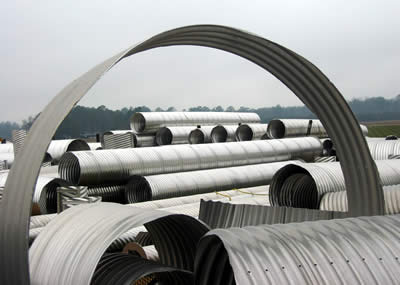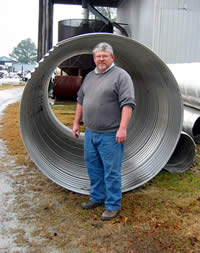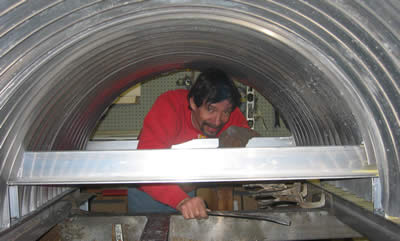It's Wednesday January 7, 2026

January 2003
Farmin’ ain’t what it used to be. Those who have ever traversed the roads in the fertile farmland east of Arapahoe are familiar with the huge aluminum pipe farm situated at the intersection of Kershaw Road and Don Lee Road.Like so many farms that pass from generation to generation within the same family, senior patriarch Garland Cahoon is not as active in Cahoon Farms as is son Doug Cahoon.
Doug and his wife, Janci, seeing the handwriting in the fields about the future of tobacco farming, decided about fifteen years ago to try their hand at growing fresh sweet corn.
Doug said, “We had some good corn land and produced two years of really high quality corn but we learned that brokers dealing with farmers producing fresh corn were not the most honorable people in the world. So the venture into sweet corn only lasted a couple of years.”
It was during that two years that the seeds for a new crop on Cahoon Farms were planted.
The Soil Conservation Service approached the Cahoons about taking part in a research project using aluminum pipes for controlled drainage and sub-surface irrigation. The first aluminum pipes cultivated on this Arapahoe farm were strictly for on-farm use.
Experiencing great success with the sweet corn using these methods, the Agricultural Extension Service transported a bus load of farmers from all across North Carolina to visit Cahoon Farms. It so happened that this visit came about during a prolonged dry spell and the visiting farmers could easily see how much better the Cahoon corn was doing compared to neighboring farms not using this piping system.
“As soon as they got off the bus, those farmers asked us to make up a piping system for them. The rest is history. It went from there, part time for the first couple of years, then full time.” said Doug.
“Seedlings” from an aluminum nursery in Raleigh are now fabricated at this Arapahoe farm and shipped all over the eastern half of the United States. One recently harvested crop of aluminum pipes is destined for an area between Rochester and Buffalo in New York for a wildlife refuge area.
According to Doug, “The biggest thing that created demand for this new crop of aluminum pipes was the Agricultural Cost Share Program. It started with 13 counties in Northeastern North Carolina in a project to clean up the Chowan River basin. That has now spread to all 100 counties. I think Pamlico County has more of these pipes installed than any other county with Hyde County probably being second.”
Customers for this new product of Cahoon Farms are not just farmers. Ducks Unlimited is a big client as they use these pipes in the creation of duck impoundments. National Wildlife Refuges use these pipes in creating and preserving wetlands. “A lot of our pipe also goes to places where farmland is being converted to subdivisions where the developer wants to create ponds and lakes for these developments,” said Doug.
Doug has also had a few special requests from clients other than farmers and agencies associated with wetlands management.
“About the weirdest thing we built was a sink for a darkroom for some guy at Dawson’s Creek. We’ve also helped a lot of people with aluminum on boat parts and we even fixed an airplane part one time. We’ve met a lot of interesting people and traveled to a lot of interesting places that we would not have experienced if we had continued to be vested in only tobacco farming” he said.
“So far,” he says, "Iraq has not called us for any high quality aluminum piping for their nuclear program. And there’s no truth to the rumor that we got into this business to make organ pipes for my mother who is a church organist.”
Janci is right there with Doug nurturing the seedlings the mminute they arrive for transplanting, or fabrication as the case may be. When asked if the seedlings came from bulbs or seeds, I was told they came from coils. Janci says that the time to harvest is usually about two to three weeks, sometimes four weeks if they are really busy. As for the fertilizer, Doug says they use a lot of magnesium.
The truth of the matter is, Garland Cahoon and his son Doug learned that there was life, a good life, after tobacco farming passes on.
And the crop they grow now surely enhances the environment. What a plus for farming in Pamlico County!
| As well as directing PR for Pamlico Community College, Ben Casey is a photographer and photo essayist. You can learn more about Ben and his books at www.bencaseyphotos.com. |




